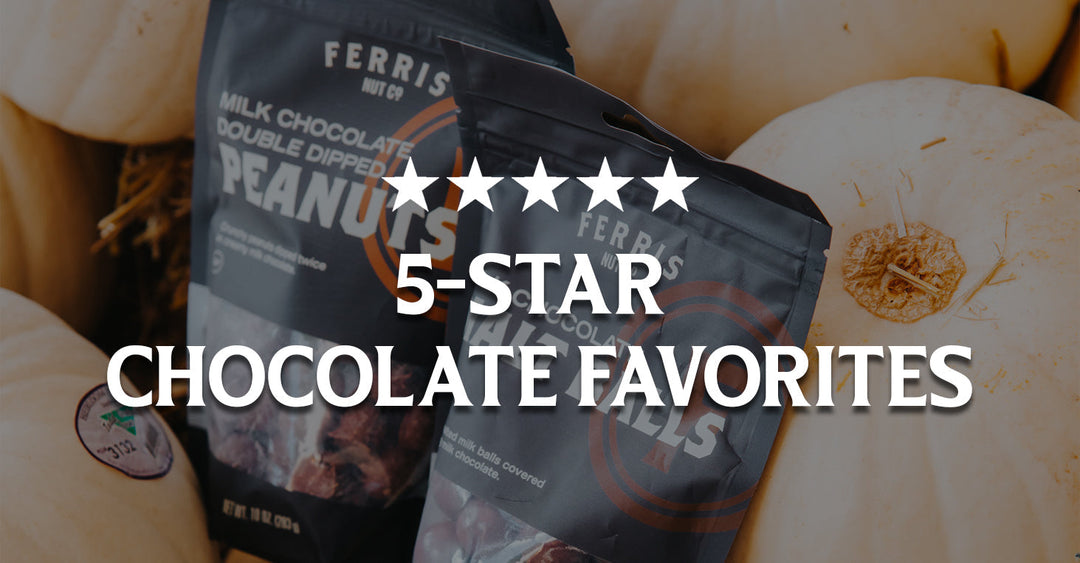The Particulars about Peanuts
It is a legume that goes by many names...the ground nut, earth nut, ground pea, goober, monkey nut but is most commonly known as...the peanut!
History and Origin
All Ferris peanuts are US-grown, though the species isn't native to the continental US. Originally, they hail from South America and made their journey to the states by taking the “scenic route.” Like many plants during the colonialism era, Spanish explorers brought the legume across the ocean and introduced the crop to Europe and Africa. Eventually peanuts made their way from Africa to North America during the Atlantic slave trade. Peanuts began in this country as a crop that was brought by slaves for slaves, but peanuts have since grown into one of the most popularly manufactured food items in America. According to the Texas Peanut Producers Board, over 700 million pounds of peanuts/peanut butter are consumed by Americans each year!

Growing and Processing
The United States grows approximately 10% of the global supply of peanuts. There are four main varieties of peanuts that are grown including Runner, Virginia, Spanish and Valencia varieties. Ferris carries Virginias (both blanched and with skin) and Spanish peanuts.
Peanuts are an especially interesting organism. They are a self-pollinating legume, and related to beans, peas and lentils. 40 days after planting, peanuts will flower. Peanuts are unusual in the fact that after fertilization, they grow a “stem”, called a peg, which pushes from above ground down into the soil. The peanut pods then grow underground. Harvest dates for this crop must be very precise. If they are pulled too early then the pods will not be ripe enough to eat and if pulled too late the pegs will break off when trying to uproot—leaving the nut underground.
Tastes and Common Uses
Peanuts are affordable, accessible and can be used in countless ways. Peanut oil, for example, is a very common product. In fact all Ferris nuts (not just the peanuts) are roasted in a refined peanut oil. Our peanut oil is non-allergenic (proteins removed from oil), has a higher smoke point than many other vegetable oils and it doesn't absorb the flavor of the food that is cooked in it. It works great for our operations but you can cook with peanut oil at home too!
Other peanut products include peanut milk, peanut flour and ready to use therapeutic food. Peanuts are also a great substance for creating biodiesel. Of course, the most popular product made from peanuts is peanut butter. According to the National Peanut Board, peanut butter can be found in almost 75% of American homes. Swing by our retail store to pick up a jar of our freshly made peanut butter!
Peanuts pair with everything from jelly, ice cream, chocolate, and bananas to tomatoes, curry and pad Thai. But our favorite pairing is a cold beer! Peanuts have been offered as pub snacks in the US for decades, but did you know that there is actually some science behind why the two go hand in hand? Natural fat in peanuts coat the tongue countering the astringent tannins present in beer. In addition the saltiness counteracts the hop bitterness, making the beer taste more pleasantly spicy—they are the perfect complements!

Nutritional Benefits
Though many associate peanuts as entertainment food, the reality is that they have a lot of nutritional benefits:
- High nutrient density
- Plant-based protein (37g per cup!)
- Monounsaturated fats—good for metabolism and reduced hunger
- Peanuts (both salted & unsalted) are considered to be a “low sodium” item since they have less than 140mg per Reference Amounts Customarily Consumed (RACC).







